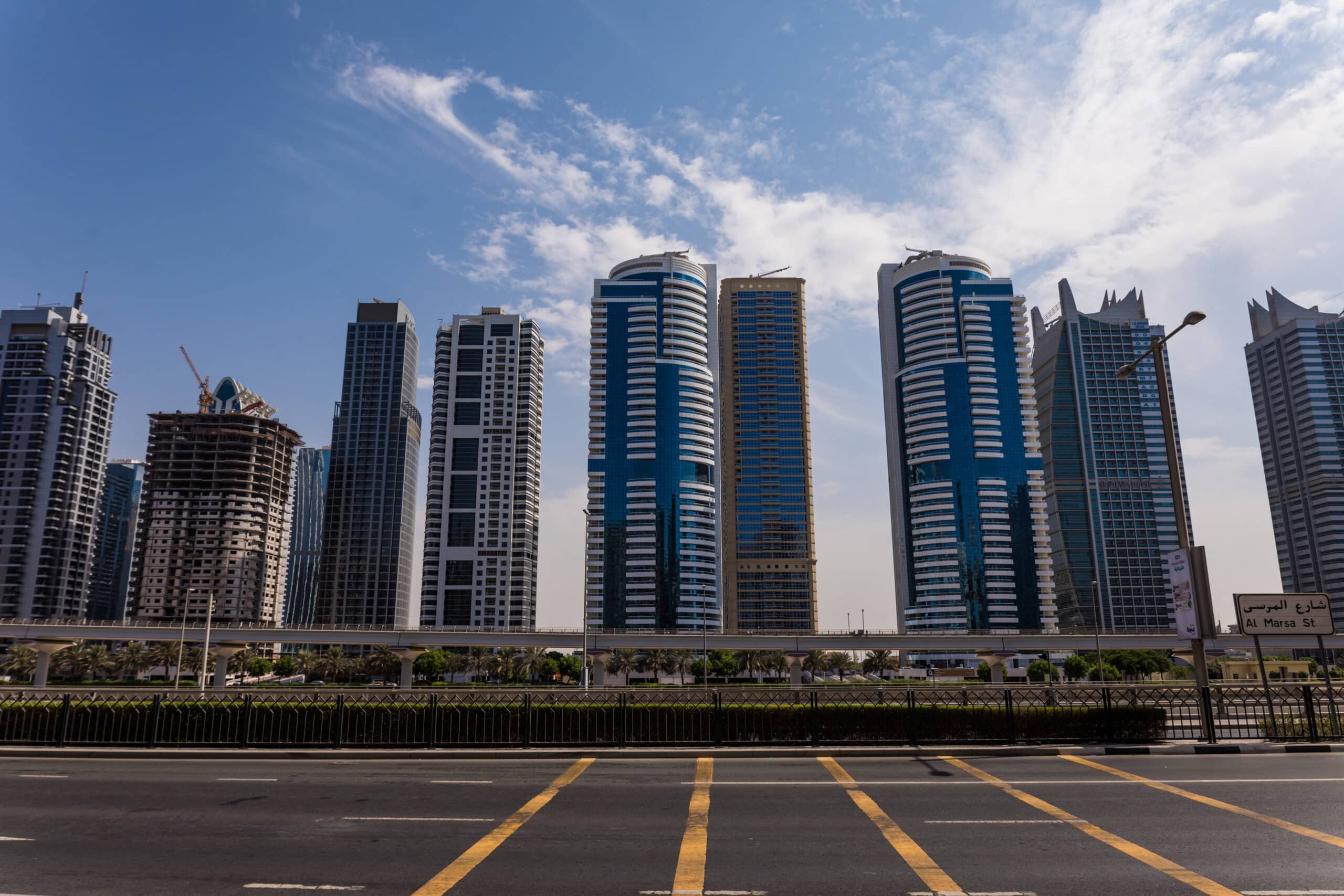Tranche 2 Aml Compliance Checklist For Australian Real Estate Businesses

Are you an Australian real estate business owner seeking to maintain compliance with Tranche 2 AML regulations? The essential components of Tranche 2 AML compliance or tranche 2 Aml compliance checklist, such as conducting customer due diligence, continuous monitoring, reporting suspicious transactions, and maintaining records, will be examined.
Additionally, the repercussions of non-compliance will be detailed, along with actionable advice on guaranteeing that your business fulfills the required criteria.
By adopting optimal practices for AML compliance within the real estate sector, you can proactively align your business with regulatory expectations.
What is Tranche 2 AML Compliance?
Tranche 2 AML compliance refers to the impending regulatory requirements that are intended to expand anti-money laundering responsibilities to various Australian entities, including real estate businesses. This falls within a larger framework aimed at mitigating the risks linked with financial crimes and ensuring strict adherence to AML regulations.
These regulations play a critical role in improving the transparency and integrity of financial transactions, with the specific objective of effectively combating money laundering and terrorist financing. The primary goals of Tranche 2 AML compliance include the identification and verification of customer identities, ongoing monitoring of transactions for suspicious activities, and the prompt reporting of any questionable transactions to the appropriate authorities.
Through the implementation of these regulations, regulatory bodies seek to fortify the overall security and stability of the financial sector, fostering trust and credibility among all stakeholders.
Why is Tranche 2 AML Compliance Important for Australian Real Estate Businesses?
Compliance with Tranche 2 AML regulations is essential for Australian real estate businesses as it ensures adherence to regulatory requirements aimed at preventing financial crimes, such as money laundering. This adherence safeguards the integrity of financial transactions and helps maintain the trust of regulatory authorities.
Implementing Tranche 2 AML regulations enables real estate businesses to enhance their operational integrity and credibility. Additionally, compliance with these regulations not only mitigates the risks associated with money laundering but also showcases a dedication to ethical business practices.
Conforming to AML compliance standards can assist businesses in establishing a favorable reputation in the market, attracting additional clients and investors who prioritize transparency and accountability. Ultimately, emphasizing AML compliance is imperative for real estate companies to prosper in a competitive and regulated environment.
What are the Key Requirements for Tranche 2 AML Compliance?
The essential elements for achieving Tranche 2 AML compliance entail a meticulous checklist encompassing:
- Customer due diligence
- Continuous monitoring of transactions
- Reporting of suspicious activities
- Maintaining meticulous record-keeping procedures
These measures are imperative to guarantee that real estate enterprises adhere to all regulatory protocols.
1. Customer Due Diligence
Customer Due Diligence (CDD) constitutes an essential component of Anti-Money Laundering (AML) compliance, obliging enterprises to authenticate their customers’ identities and evaluate the associated risks to mitigate money laundering endeavors.
The process of customer identification entails the collection of pertinent details such as name, residential address, date of birth, and government-issued identification documents. Additionally, this procedure serves the purpose of affirming the customer’s identity and ensuring that fabricated or stolen identities are not utilized for financial undertakings. Verification protocols encompass cross-referencing the provided particulars with reputable sources or employing electronic validation mechanisms.
In the realm of CDD, risk assessment assumes paramount significance, enabling entities to gauge the probability of a customer’s involvement in illicit practices. Through the evaluation of aspects such as the customer’s transactional history, commercial affiliations, and geographic locations, organizations can stratify risk levels and implement commensurate due diligence protocols.
2. Ongoing Monitoring
Continual surveillance involves the ongoing examination of customer transactions to identify and report any potentially illicit activities as part of a comprehensive Anti-Money Laundering (AML) compliance framework.
This procedure relies on advanced monitoring tools like transaction monitoring systems, which employ algorithms to scrutinize patterns and identify any anomalies. Additionally, these systems have the capability to monitor high volumes of data in real-time, cross-referencing transactions against established risk scenarios to pinpoint possible indicators of concern.
Through consistent transaction monitoring, financial institutions can detect unusual activities, such as significant sudden transactions or frequent international transfers, which may suggest illicit money laundering or terrorist financing operations. Additionally, early identification of these discrepancies allows institutions to conduct further investigations and implement necessary measures to prevent financial crimes, thereby safeguarding both their interests and those of their clients.
3. Reporting Suspicious Transactions
The prompt and accurate reporting of suspicious transactions is an essential aspect of Anti-Money Laundering (AML) compliance within the real estate sector. Additionally, it is imperative for real estate businesses to expeditiously notify regulatory authorities of any transactions that may have ties to money laundering activities.
Real estate enterprises, through the prompt identification and reporting of suspicious transactions, play a pivotal role in fortifying the financial system against illicit activities. Timely reporting not only aids in deterring money laundering but also assists in the prevention of other financial crimes such as terrorist financing and fraudulent activities. Additionally, this heightened vigilance not only serves to safeguard the integrity of the real estate industry but also upholds the overall reputation of the sector.
Adherence to stringent reporting protocols guarantees that regulatory oversight is robust in its ability to monitor and investigate potential risks effectively, thereby enhancing the system’s capacity to withstand illicit financial activities.
4. Record Keeping
The maintenance of detailed documentation is a critical component of Anti-Money Laundering (AML) compliance. Businesses are obligated to preserve comprehensive records of all financial transactions, customer details, and compliance initiatives to ensure transparency and adherence to regulatory standards.
This documentation encompasses various elements, including but not limited to customer identification records, transaction histories, findings from risk assessments, and details of due diligence measures undertaken. These records are fundamental in evidencing compliance with anti-money laundering laws and regulations.
It is essential that these records are preserved for a stipulated duration, typically between five to seven years, as per regulatory mandates. Additionally, accurate record-keeping not only facilitates internal monitoring but also plays a crucial role in supporting audits and regulatory assessments to showcase the efficacy of an organization’s AML program.
What Are the Penalties for Non-Compliance with Tranche 2 AML Requirements?
Failure to comply with the Tranche 2 AML requirements can lead to significant penalties, including substantial fines, legal repercussions, and regulatory enforcement measures, which can have a profound impact on the reputation and operational capacity of real estate enterprises.
Business entities that disregard AML regulations may be subject to financial penalties ranging from thousands to millions of dollars, contingent upon the gravity of the infractions. Along with monetary sanctions, regulatory bodies possess the authority to enforce other measures such as revocation of licenses, temporary suspension of business operations, and potential incarceration for individuals implicated in illicit financial activities.
Enforcement actions may encompass various procedures such as on-site inspections, scrutiny of documentation, and directives for the implementation of comprehensive anti-money laundering compliance frameworks. Additionally, these protocols are crafted to ensure that enterprises uphold transparency and ethical standards in their financial dealings, fortifying the financial system against unlawful practices.
How Can Australian Real Estate Businesses Ensure Tranche 2 AML Compliance?
Australian real estate businesses can establish Tranche 2 AML compliance by formulating an extensive AML/CTF program, providing training to employees regarding their AML responsibilities, carrying out routine risk assessments, and instituting strong internal controls and protocols to identify and deter money laundering activities.
1. Develop an AML/CTF Program
The development of an Anti-Money Laundering/Counter-Terrorism Financing (AML/CTF) program entails the establishment of a well-organized compliance framework encompassing policies, procedures, and controls aimed at identifying and preventing money laundering and terrorism financing activities.
An AML/CTF program typically comprises various essential components. One critical element involves the thorough conduct of customer due diligence to validate clients’ identities and evaluate their risk profiles. This is supplemented by continuous monitoring of transactions and behaviors to detect any suspicious activities. Additionally, the implementation of comprehensive training initiatives for employees is imperative to equip them with the requisite knowledge and skills to identify and report potential issues. Regular audits and reporting mechanisms are equally vital for evaluating the program’s efficacy and making necessary adjustments to ensure adherence to regulatory requirements.
2. Train Employees on AML/CTF Obligations
It is imperative to provide comprehensive training to employees regarding Anti-Money Laundering/Counter-Terrorist Financing (AML/CTF) obligations to cultivate a culture of compliance and ensure that all team members understand their roles and responsibilities in the prevention of financial crimes.
Regular training programs are instrumental in arming employees with the requisite knowledge and skills to recognize suspicious activities, comprehend the regulatory frameworks pertaining to money laundering, and adhere to the prescribed protocols for reporting such incidents. Also, key topics such as risk assessment, customer due diligence, and internal controls should be encompassed within these training sessions to augment employees’ awareness and proficiency in compliance.
Additionally, by underscoring the significance of adhering to AML/CTF protocols, organizations can effectively mitigate risks, safeguard their reputation, and promote a workplace culture characterized by integrity and ethical behavior.
3. Conduct Regular Risk Assessments
Regular risk assessments are essential for real estate businesses to identify and address potential risks associated with money laundering. Additionally, by employing methodologies such as due diligence procedures, transaction monitoring, and customer identification programs, real estate entities can conduct comprehensive analyses of their operations and transactions to detect any suspicious activities.
It is imperative for these entities to conduct periodic evaluations to ensure that risk assessments are current and reflective of the constantly evolving regulatory environment. Additionally, effective risk management is crucial for maintaining Anti-Money Laundering (AML) compliance by preemptively addressing vulnerabilities, establishing internal controls, and cultivating a culture of attentiveness to financial crimes.
4. Implement Internal Controls and Procedures
It is essential to establish internal controls and procedures to effectively enforce all compliance measures and promptly identify and address any potential breaches of AML regulations.
Various forms of controls can be implemented, including segregation of duties, routine internal audits, and comprehensive documentation processes. Segregation of duties aims to prevent any individual from having complete control over an entire transaction process, thereby minimizing the likelihood of fraud or errors going unnoticed. Additionally, internal audits play a crucial role in evaluating the efficiency of current controls and procedures, facilitating ongoing enhancements. Maintaining meticulous documentation processes ensures the availability of a clear audit trail, which assists in compliance verification and demonstrates adherence to regulatory mandates.
What are the Best Practices for Tranche 2 AML Compliance in the Real Estate Industry?
Optimal strategies for achieving Tranche 2 AML compliance within the real estate sector encompass the implementation of enhanced due diligence procedures for high-risk clientele, the integration of sophisticated technological tools for AML compliance, and the continuous monitoring of regulatory modifications to guarantee the alignment of all compliance methodologies with prevailing industry norms and compliance patterns.
1. Conduct Enhanced Due Diligence on High-Risk Customers
Conducting enhanced due diligence on high-risk customers entails conducting a comprehensive evaluation of their financial behaviors, beneficial ownership information, and potential risks associated with money laundering. Additionally, this process plays a critical role in the detection and prevention of financial crimes, including terrorist financing and fraudulent activities.
The identification of high-risk customers is based on various criteria, such as intricate ownership arrangements, transactions involving jurisdictions with heightened risks, politically exposed persons (PEPs), and customers displaying unusual or unexplained transaction patterns.
Following the identification of these high-risk individuals, the subsequent step involves evaluating the specific risks they present. Additionally, this evaluation includes a detailed analysis of their transactions, verification of the sources of funds, and assessment of the legitimacy of their financial operations.
2. Utilize Technology for AML Compliance
The implementation of technology in Anti-Money Laundering (AML) compliance entails the utilization of sophisticated compliance software and monitoring tools to automate the identification of suspicious activities and optimize the efficiency of compliance procedures.
These technological solutions equip financial institutions with the capability to conduct real-time monitoring of transactions, identify anomalous patterns, and generate comprehensive reports for auditing purposes. Additionally, by harnessing machine learning and artificial intelligence algorithms, these tools can continuously adjust to emerging threats and trends in financial crime, thereby enhancing the overall efficacy of AML initiatives.
Compliance software facilitates the simplification of the reporting process, ensuring the timely submission of regulatory requirements and mitigating the exposure to non-compliance penalties. Thus, given the escalating intricacy of financial crimes, the integration of advanced technology is imperative for proactively addressing evolving risks.
3. Stay Up-to-Date with Regulatory Changes
It is imperative for real estate enterprises to stay abreast of regulatory modifications to ensure that their compliance protocols adhere to the most recent compliance guidelines and regulations.
This continual monitoring of regulatory amendments is essential not only for averting potential penalties and legal complications but also for upholding a sterling reputation within the sector. Additionally, by remaining cognizant of alterations in laws and regulations, real estate professionals can proactively adapt their methodologies to ensure compliance.
One efficacious approach for remaining informed about regulatory updates involves subscribing to industry periodicals, participating in pertinent conferences, and engaging in networking opportunities with regulatory specialists. Additionally, these engagements furnish invaluable insights into impending alterations and potential ramifications on compliance protocols.
Frequently Asked Questions
What is Tranche 2 AML Compliance Checklist for Australian Real Estate Businesses?
Tranche 2 AML Compliance Checklist for Australian Real Estate Businesses is a set of guidelines and requirements that real estate businesses in Australia must follow in order to comply with the Anti-Money Laundering and Counter-Terrorism Financing Act 2006.
Who needs to comply with Tranche 2 AML Compliance Checklist?
All real estate businesses operating in Australia, including real estate agents, property developers, settlement agents, and property managers, are required to comply with the Tranche 2 AML Compliance Checklist.
What are the key requirements of Tranche 2 AML Compliance Checklist?
The key requirements of Tranche 2 AML Compliance Checklist include conducting customer due diligence, reporting suspicious transactions, keeping records of transactions, appointing an AML compliance officer, and implementing AML training and awareness programs.
When did Tranche 2 AML Compliance Checklist come into effect?
Tranche 2 AML Compliance Checklist came into effect on 1 January 2019 for real estate businesses in Australia.
What are the consequences of non-compliance with Tranche 2 AML Compliance Checklist?
Non-compliance with Tranche 2 AML Compliance Checklist can result in penalties and fines, as well as damage to the reputation of the real estate business. It can also lead to criminal charges if money laundering or terrorism financing activities are involved.
How can real estate businesses ensure compliance with Tranche 2 AML Compliance Checklist?
Real estate businesses can ensure compliance with Tranche 2 AML Compliance Checklist by familiarizing themselves with the requirements, implementing appropriate policies and procedures, conducting regular training for employees, and keeping up to date with any changes in the regulations.



